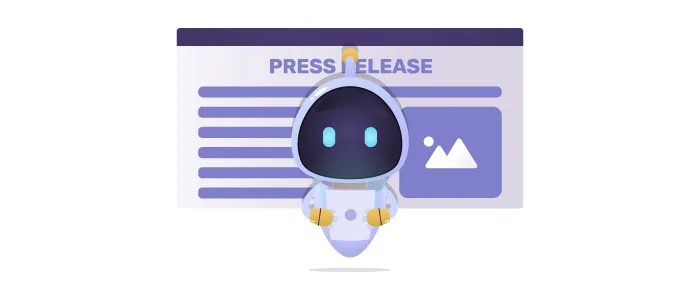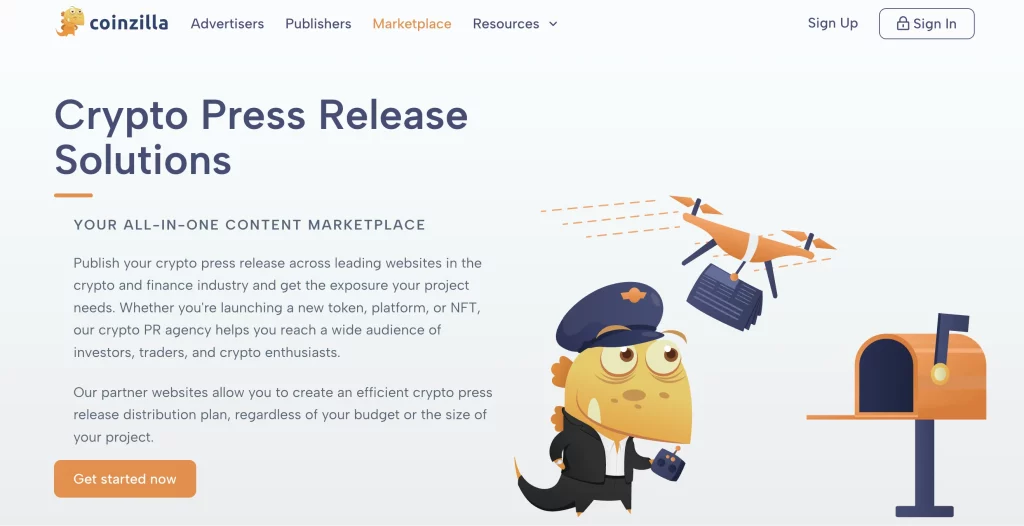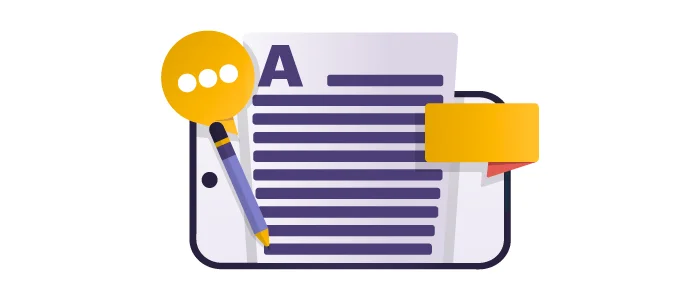How to Write a Press Release: A Simple & Effective Guide
We’ve all been there, typing “how to write a press release” and falling into a 2–3 hour rabbit hole. There are endless tabs, vague advice, and too much information that’s either outdated, off-topic, or unhelpful.
It’s frustrating. You just want to know how to write a good press release that gets read; instead, you get guidelines with no structure and examples with no context.
This guide shows you two clear paths: how to write a press release step by step, skip the hassle, and automate the process with Coinzilla’s help. Either way, you’ll finally get practical press release writing tips that work.
Table of Contents
Press Release Writing vs. Outsourcing: What Works Best?
| Criteria | Do It Yourself | Coinzilla Marketplace |
|---|---|---|
| Writing the PR | You write it from scratch. | Coinzilla writes it for you. |
| Editing & Structure | You handle everything. | Coinzilla team handles it. |
| Design | You create or outsource it. | Not included. |
| Finding Publishers | You research and contact them. | Pick from a ready list. |
| Getting Published | Might happen, might not. | Guaranteed on selected sites. |
| Payments & deals | Separate talks with each site. | One platform, one payment. |
| Time needed | Days or even weeks. | Setup in a few minutes. |
| Point of contact | None | Dedicated account manager. |
1. How to Write a PR from Scratch

If you plan to write and publish a press release, this step-by-step guide covers everything you need. From structuring your announcement to finding publishers, we’ll walk you through the process so your press release can get noticed.
Step 1: Understand the Basics
A press release is a short, fact-based announcement (usually around 700 – 1000 words) that shares something newsworthy in a way that journalists can quickly understand and use. It’s not an ad; it’s an informative story told professionally.
Thus, you should know what your project is about, who is involved, where it will occur, when, and so on. Having all the details in mind and knowing what and why you want to write the PR will be useful once you start drafting your text.
Step 2: Follow the Standard PR Structure
Your press release should follow a clear layout, each section serving a specific purpose. Here’s how to structure it in the order it should appear:
1. Headline
A strong, clear title that tells the reader what the news is about. It should be short, informative, and not sound like an ad.
Example: “Startup X Raises $5M to Launch AI-Powered Education Tool”
2. Intro Paragraph + Dateline
Start with the dateline (city + date), followed by the lead paragraph, which summarizes everything necessary in two to three sentences.
Answer the fundamental questions:
Your first paragraph should answer these core questions:
- What? What is happening? What are you announcing?
- Who? Who is involved? Who does it impact?
- Where? Where is this taking place? Online or offline?
- When? When is the event or launch? What are the key dates?
- Why? Why does this matter? Why now?
- How? How is this happening? How did it come together?
Keep it factual and to the point, as this is the core of your announcement.
Example:
NEW YORK, May 15, 2025—Startup X, a company focused on educational tech, has secured $5 million in seed funding to launch its AI-powered learning platform across U.S. schools in September 2025.
3. Subheading / Body Paragraphs
This section gives more context and depth. It can include:
- More detailed background on the project or event;
- What the company hopes to achieve;
- Key statistics, facts, or data;
- A clear explanation of why this matters to the audience.
Use 1–2 short paragraphs to explain the whole story. This is where journalists decide if the story is worth covering, so keep it relevant.
4. Quote (optional)
Add a quote from someone inside the company or involved in the event. This makes the announcement more personal and credible.
Example: “We’re excited to see how this technology will change classrooms across the country,” said Jane Doe, CEO of Startup X.
5. About the Company (Boilerplate)
Once the story has been told, include a short paragraph about the company.
Mention:
- What the company does;
- When it was founded;
- Industry or mission.
Keep it professional and short, like a mini “About Us.”
6. Closing Line
Wrap up with a simple conclusion or next steps. Then add:
“For more information, please contact:” followed by
- Name;
- Email;
- Social media platforms;
- Website.
In short:
- Headline: To grab attention;
- Intro paragraph + dateline: Answer the core info (5Ws + H);
- Subheading/body: Expand the story, what’s happening, why it matters;
- Quote: Add trust and character;
- Boilerplate: About the company;
- Closing: Contact info and wrap-up with a strong CTA.
Step 4: Consider Basic SEO Principles
SEO matters if your press release is published online. A few small things can help it perform better:
- Use relevant keywords in your headline and lead paragraph;
- Add one or two strategic internal links (to your site or landing page);
- Avoid keyword stuffing and keep it natural;
- Include alt text and file names for any images;
- Use a meta description if the platform allows it.
This helps increase your visibility in search engines and gives your press release a longer digital life.
Step 5: Add Visuals (If Possible)
A clean visual, like a logo or header image, can make your press release more appealing to journalists and readers. If allowed by the publisher, include:
- Company logo (top or bottom);
- 1 high-resolution image (landscape, related to the news).
Step 6: Find the Right Publishers
This part takes time. Here’s how to approach it:
- Make a list of relevant websites, media outlets, and industry blogs;
- Check their submission guidelines (some require email, other forms);
- Send your press release directly with a short, clear pitch;
- Personalize your message, and don’t mass blast;
- Follow up once if needed (but don’t spam);
Pro tip: Prioritize niche and local outlets if your news has limited reach.
Step 7: Handle Publishing & Payment
Not all platforms are free. Expect to:
- Get pricing from each outlet;
- Negotiate posting terms;
- Handle invoices and approvals;
- Track where and when your PR goes live.
Create a simple spreadsheet to manage it all, it’ll save you a headache later.
Step 8: Review Before Sending
Before you hit send, check the following:
- No typos or grammar issues;
- Contact info is correct and easy to find;
- All links work, and add UTMs to keep track of analytics;
- It fits the standard format;
- Someone else has reviewed it for clarity.
2. How to Write a PR the Easy Way?

You let Coinzilla take charge and enjoy the results.
As you’ve already seen in the step-by-step guide above, learning how to write a good press release takes time. You must follow press release rules, get the structure right, and deal with design, distribution, and negotiation. Even with all the best press release writing tips, the process can be overwhelming. So… what if you didn’t have to do any of it?
With Coinzilla Marketplace, you can launch and publish your press release without writing a word, but reap the benefits. Coinzilla’s team will craft a clean, newsworthy release based on your brief, following all professional press release guidelines. You can also choose to upload your draft if you already have one.
1. Approve Before Publishing
Once the PR is ready, you get to review and approve it. Nothing gets published without your green light.
2. Full Control Over Where It’s Published
You choose the websites. Filter publishers by category (NFTs, DeFi, crypto exchanges, gambling, etc.), audience, language, or price, with full transparency from the start.
3. Faster Turnaround, No Hassle
Most PRs are published within a few days, up to 70% faster than doing it yourself. There is no chasing contacts, and there are no delays.
4. Escrow-Protected Payments
Coinzilla provides escrow-secured payments, so you’re fully protected. If something goes wrong with a publisher, you get a refund without risks or chargebacks.
5. Real-Time Updates & Account Manager
You’ll have a dedicated account manager and full visibility during every stage, from creation to publication. Once your PR goes live, you’ll also get proof of delivery.
Whether you’re launching a new token, NFT collection, or DeFi platform, Coinzilla gives you everything you need to promote your news professionally without wasting time or energy.
Best Practices for Press Release Success

Now that you know how to write a press release and how to get it published, here are a few extra best practices that can make the difference between being noticed and ignored.
Think Like a Journalist
Even the best-written press release will be ignored if it doesn’t answer one key question: why should people care? Avoid filler and make every sentence count. Focus on relevance, clarity, and news value.
Don’t Overuse Quotes
Quotes add personality, but too many can feel forced or promotional. Use one or two, and make sure they sound natural, like a real person would say.
Format for Skimming
Editors are busy. Make your press release writing easy to scan by using short paragraphs, bold key information if possible, and bullet points when listing data or features.
Customize When Needed
If you’re manually sending your press release to multiple outlets, tweak your intro to match each outlet’s style or audience. A small effort can improve your chances of being picked up.
Include Visuals & Links Wisely
Don’t overload your press release with attachments. Instead, link to high-quality images or files hosted online. If your announcement ties into a larger campaign or landing page, include that link, too. It supports both your PR and SEO.
Keep a Clean Contact Section
Your press release guidelines should always include one clear contact person. Journalists don’t want to search your website just to find out who to email.
Track and Learn
If you’re doing manual outreach, keep track of who opened, published, or replied. If you use a platform like Coinzilla, monitor where your release goes live. Either way, tracking helps you improve your press release strategy over time.
FAQ
A press release is a short news-style announcement that grabs the media’s attention. It helps businesses share essential updates, boost visibility, and shape how their story is told.
A press release is a formal announcement created by a company, while a journalist independently writes a news article. Press releases often include quotes, structured formatting, and a promotional angle, whereas news stories focus on impartial reporting and storytelling.
Yes, writing a press release is a skill anyone can learn. With a clear structure, proper press release guidelines, and a bit of practice, anyone can write a release that gets attention. You can also use templates or platforms like Coinzilla to simplify the process.
Not quite. A blog post is more informal and opinion-based, while a press release is factual, structured, and written in a journalistic tone. Press releases aim to inform and get picked up by the media, not just share thoughts or stories like a blog would.
Not always. You can send a press release for free to journalists or local media. But if you want visibility on high-traffic websites, most press release distribution platforms (including Coinzilla) require payment for access, speed, and guaranteed publishing.
Final Thoughts
Learning how to write a press release isn’t just about following a template; it’s about telling a story that matters. Clarity is key in announcing a product launch, sharing company news, or building visibility for your project.
If you enjoy doing things yourself, this guide gives you all the press release writing tips and tools you need to get started, from formatting to finding publishers. But if you’d rather save time and skip the friction, Coinzilla Marketplace is ready to handle everything for you.
Whatever path you choose, remember this: a good press release gets attention not because it shouts the loudest but because it delivers real value to the right audience.